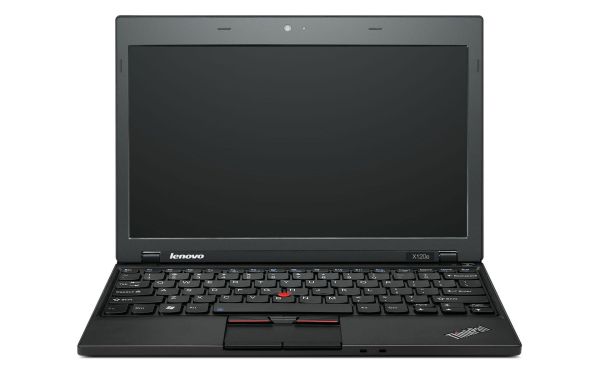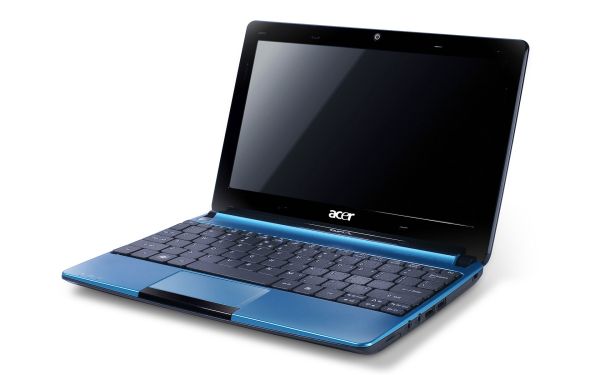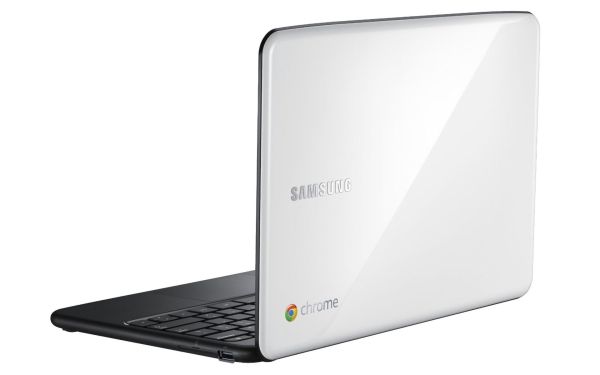Holiday 2011 Laptop Buyer’s Guide
by Jarred Walton on December 2, 2011 3:45 AM ESTGoing Cheap: Netbooks and Chromebooks
Sometimes all you want is a really inexpensive laptop that you can carry with you all day, without worrying about finding somewhere to plug in. For this market, there are really two hardware platforms to look at: Intel’s Atom and AMD’s Brazos. In terms of size, “netbook” means different things to different people, but we’ll confine the discussion to 10.1”, 11.6”, and 12.1” offerings—the latter being important for getting the faster dual-core Brazos (AMD E-series) processors. Let’s start with the AMD recommendation first.
Recommended Netbook
Somewhat surprisingly, even a year after the Brazos launch, laptops with the C-series processors remain rather sparse. A quick look at Newegg for instance shows only a few C-series laptops, most of them from Acer; the two laptops that aren’t from Acer come from ASUS, and let’s just be clear: we’re not interested in a 15.6” laptop with a C-50 or C-60 processor—or even the higher clocked E-350 and E-450 offerings. If you’re going to use a Brazos APU, we don’t see any need for a larger size chassis. Once we whittle down the list to 12” or smaller, it shouldn’t come as much of a surprise that we end up back at our Editors’ Choice HP dm1 yet again.

Everything you need in a netbook: HP dm1 for $480 ($50 mail-in rebate available)
The price is a bit lower than the last time we mentioned it, and there are a few minor upgrades. $480 (with a $50 rebate) will get you 4GB RAM, a 320GB 7200RPM hard drive, and the 1.65GHz E-450 processor. The overall build quality is still one of the better Brazos offerings, and while the display is only average quality, that’s hard to avoid in the sub-$500 laptop market. Battery life is quoted at up to 9.5 hours, which is close enough to what we measured that we’ll go with it.
ThinkPad quality for the same price: Lenovo X120e for $435
As an alternative—and in many ways, it's actually better than the HP dm1—consider the Lenovo ThinkPad X120e. Normally it's priced over $500, but Lenovo has some great sales going on most of their product line right now. You can currently get the X120e with 4GB RAM, E-350 APU, and a matte display for under $500 direct from Lenovo, or if you don't want to custom configure your system you can get the same thing for $435 shipped. HP has the edge (by a very slim margin) with an E-450 over the E-350, but for most users it won't matter.
What if you’re willing to give up some performance and/or features to get the price even lower? You’ll have to give up on the E-350/450 in that case and opt for the AMD C-50/60 in its place. The results is still more flexible than Atom (particularly in multimedia workloads), and you can get the price under $300 with the current sales. As noted, only Acer and ASUS appear to be shipping small netbook-class systems with C-series APUs, and between the Acer and ASUS offerings our pick would be the 12.1” ASUS Eee PC 1215B, currently going for a clearance price of $260 (but with only 1GB RAM).
Acer’s alternatives still have their undesirable floating island keyboard, but they compensate with other features. The Acer AO522 gives you a 10.1” C-50 netbook with 1GB RAM for $290, while the Acer AO722 bumps up to an 11.6” chassis and stuffs in 4GB RAM, a 500GB 5400RPM HDD, and a C-60 APU for $350. The C-60 is more desirable than the C-50, thanks to Turbo Core on both the CPU and GPU, but is it worth a lesser quality keyboard and an increase in price of $70? Probably not.
Atom Netbook Recommendation
While we’d say Brazos is pretty much universally faster than Atom, it’s not necessarily cheaper and thus there’s still a potential market for Atom-based netbooks. You can get great battery life and a small form factor, with performance that’s still “fast enough” for basic office/email/internet use. What we wouldn’t recommend for Atom netbooks is using them for multimedia content (HD videos especially), practically any form of gaming, or even use with Flash applications/games. If you’re okay with that stipulation, then Atom netbooks can be a handy secondary/tertiary device. Atom is also the platform of choice for Google’s Chromebook initiative, which we’ll cover below.
Go cheap or go home: Acer Aspire One D257 for $230
If you’re in the market for an Atom netbook, price has to be the overriding consideration—see above for the $260 Brazos C-50. While there are many Atom netbooks out there, few of them are available for less than the low water mark that Brazos sets. We’re not handing out awards for build quality or features, but when it comes to lowest price possible it’s hardly a surprise to see an Acer netbook hit the mark. Short of any major sales, it looks like the Acer Aspire One D257 is the cheapest Atom N570 netbook around right now, going for $230 online, although it does skimp on the battery capacity to get there. If you want an Atom processor with a decent battery, you’re back into the $270+ range, at which point we just don’t feel Atom makes sense.
What about Atom Chromebooks?
So we’re pretty bearish on the current Atom netbooks, but there’s another mobile contender in town, and so far it’s Atom-only hardware: the Chromebook. Right now there are only two Chromebook manufacturers shipping hardware, Acer and Samsung. We’ve covered their announcements, but more importantly we now have review samples from both companies in hand. So, which is the better Chromebook, and what do we think of Chrome OS in general now that it’s matured since our original look?
Chomebook, because you dislike Windows: Samsung Series 5 WiFi for $350
Not surprisingly, the choice between the two models largely comes down to price vs. quality. I only received the two Chromebooks this week, so I haven’t had a lot of time to use them, but while the keyboard layouts are identical the keyboards are not. Acer goes for their “floating island” keys and Samsung uses chiclet keys; of the two options I definitely prefer the Samsung keys. Samsung also has a nicer looking build, and a better display in some respects—maximum brightness is slightly higher and it has a matte finish rather than going glossy. While neither display is high contrast, the Samsung fares better outdoors thanks to its non-reflective nature. Take all of those elements together and which Chromebook comes out on top? The Samsung Series 5. However, the $50 savings of the Acer still makes it viable.
Outside of the actual hardware, Chromebooks are interesting for the change to a largely cloud-oriented computing experience. While there is some support for local storage, doing things like accessing files stored on other networked PCs isn’t something you can do. You store your documents in the cloud and everything else comes via the Chrome browser, so unless you have a home web server where you store your files, a Chromebook is for media consumption and cloud/Internet work. I’m sure others will take to the switch much more readily, but for someone entrenched in my usage patterns of Word, Excel, Thunderbird, and Photoshop as my primary applications (outside of the web browser), it can be a bit too much.
Where the Chomebooks do impress is in their ability to use relatively slow hardware (e.g. Atom CPUs with 1GB RAM) to deliver a decent web experience. Sure, a fast laptop or desktop PC will still load pages quicker than a Chromebook, and certain content (e.g. HD YouTube videos) proves too much for the platform (at least until the next CPU/GPU update). But if you’re interested in some comparative performance results, SunSpider 0.9.1 checks in at 1346ms, which is still 25% faster than the fastest tablet we’ve tested to date in that particular benchmark (ASUS’ Eee Prime Transformer). For general web surfing, Chromebooks feel quite a bit better than regular Windows netbooks, though there are still areas where they fall short (Flash games, HD videos, and other similar content is too much for the Atom N570 + GMA 3150).
If tablet hardware is fast enough for most Internet related tasks, Atom Chromebooks are right in the mix (minus the sluggish GMA 3150 graphics—I do feel like Chromebooks can still benefit from a faster GPU, particularly for multimedia consumption; it would be very interesting to see a Chromebook based on AMD’s C-60). For some, that’s good enough and the price, size, and battery life are right. There’s also the novelty factor—using a Chromebook very much changes the way you do things, which some enthusiasts might enjoy. For most others, however, a “normal” laptop is still the way to go—particularly when we consider that you can get Windows netbooks with reasonable hardware for around the same price as the least expensive Chromebook.













88 Comments
View All Comments
aranyagag - Friday, December 2, 2011 - link
I am also holding on to my core 2 duo until it either gives up the ghost or I get a taller screenHrel - Friday, December 2, 2011 - link
Gonna have to disagree on the midrange gaming laptop.http://www.cyberpowerpc.com/system/Xplorer_X6-9300...
I have for some time, and continue to believe this is simply the best laptop per dollar you can buy right now.
JarredWalton - Saturday, December 3, 2011 - link
That's practically the same as our W150HRQ recommendation in many ways, only without Optimus and with a faster GPU. However, it's also $1200+ where we linked an ASUS G53SX going for under $1000. The Clevo P151HM is potentially faster, but having reviewed the P151HM I can say that the keyboard quality and overall build quality are nothing special. I would rather have the ASUS.Hrel - Saturday, December 3, 2011 - link
Jarred, you and everyone else at Anand are always going on about laptop screens. How can you recommend the Asus when you know the screen is bog standard? Yes it's 1080p, which helps. But viewing angles, contrast, color accuracy, all those are areas where Asus consistently and inexplicably goes with a sub-par display.Hrel - Saturday, December 3, 2011 - link
Also to clarify, from my perspective money isn't a concern as much as bang/buck is. And I care a great deal about the screen. I will say, while I'm satisfied with the quality of the speakers on the P151 Clevo, they could be louder. My only other complain though is the 10 key, the 0 needs to be moved over, if that means shrinking the arrow keys that's fine with me; then make the enter key larger or move it to the left. Build quality however and the rest of the keyboard, and tactile feedback, I find very impressive. I bought this laptop after asking you if I should get this or the MSI actually. You said Clevo or Asus, I went with the Clevo and couldn't be happier with it.JarredWalton - Saturday, December 3, 2011 - link
My understanding is the G53SX has models in both matte and glossy, and that those are all higher contrast displays. However, I can't say for sure as ASUS is clearly sourcing from multiple vendors. Right now, I only know of two matte 1080p 15.6" LCD panels, both from AU Optronics and both good quality. One is high color gamut and the other is standard sRGB, and I would be happy with either one.If you've personally seen the G53SX and it does not have a decent contrast (e.g. it has a very poor black level), let me know, but the information I was able to dig up suggests the 1080p models are better than average displays.
Hrel - Saturday, December 3, 2011 - link
Oh, also the GTX560M is the slowest GPU I'd accept. It is a shame it doesn't have Optimus, especially since it's supported. But the battery life is quite impressive, in my own uses.pepperoni - Friday, December 2, 2011 - link
Jarred - I was a little surprised by your dismissal of 3D panels on notebooks. I have never seen a 120Hz display, but I have been intrigued ever since I read this review by your colleague:"[It] was my first exposure to 120Hz refresh displays that aren’t CRTs, and the difference is about as subtle as a dump truck driving through your living room. I spent the first half hour seriously just dragging windows back and forth across the desktop - from a 120Hz display to a 60Hz, stunned at how smooth and different 120Hz was. Yeah, it’s that different." --Brian Klug 8/7/10
Your critique of mobile 3D has mainly centered on the lack of utility -- a point I completely agree with. Like you, I have zero interest in viewing any 3D games or movies on a notebook (or in my living room or in a theater, for that matter), but if 120Hz benefits the 2D experience half as much as Brian Klug claims, it sounds great.
The Toshiba A665-3DV you reviewed had crappy resolution and low contrast. I'm thinking about Dell's XPS 17 with 1080p 3D. Do you think 120Hz is a worthwhile upgrade for someone like me who hates 3D?
snuuggles - Friday, December 2, 2011 - link
I agree. I own an hn274h for 2d only, it makes a significant difference in my day to day activity and game playing. Everything just feels... Crisper? I'm not sure how to describe itOne reason they might not want to do it it power use, I'm guessing if it's running twice as fast it'll use more juice. But the truth is that there's simply no market for better displays--witness all the 13" 1360x768 60hz tn panels on supposed high end ultra books. The average consumer is idiotic.
Hey, not to put too fine a point on it, but our own jarred recommended the UTTERLY worthless ux31 based from what I can only guess is on the looks and specs. Certainly anyone who tried to use it to work would instantly find the keyboard--the single biggest differentiating factor between this and a tablet--completely unusable due to the short throw and stiff action of the keys
Sorry Jarred, you blew it big time. I'm not normally this harsh to an individual, but you need to hear this: it is unacceptable for you to recommend something based on specs alone
JarredWalton - Saturday, December 3, 2011 - link
Two things for you. First, here's the last part of my paragraph dismissing 3D: "Okay, sure, the 120Hz refresh rates would actually be nice, but does anyone want to view 3D content on a notebook?" I like the idea of 120Hz displays for non-3D purposes, but unfortunately you have to pay for all the 3D rigmarole to get there (e.g. glasses, emitter, etc.) and you generally can't get 120Hz displays unless you go with NVIDIA GPUs.Second, and this is specifically for snuuggles, I've got the UX31E sitting on my test bench right now. I can tell you the expected battery life and the performance. Given that it's an ultrabook, going outdoors into brightly lit environments is a very likely use case. A 500 nit display is going to be very useful. Would I prefer higher contrast? Of course, but at least the resolution is better than the competition. But you weren't talking about the display.... [To be continued!]